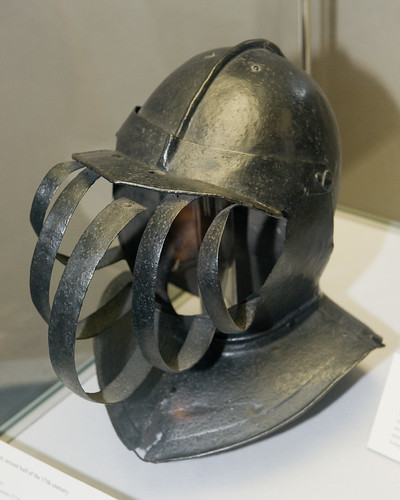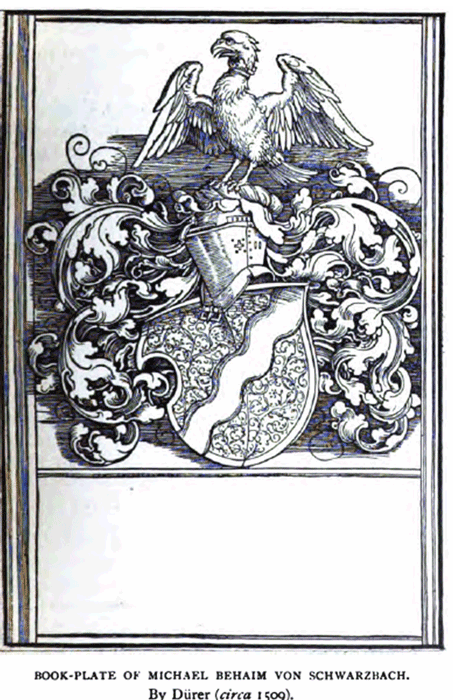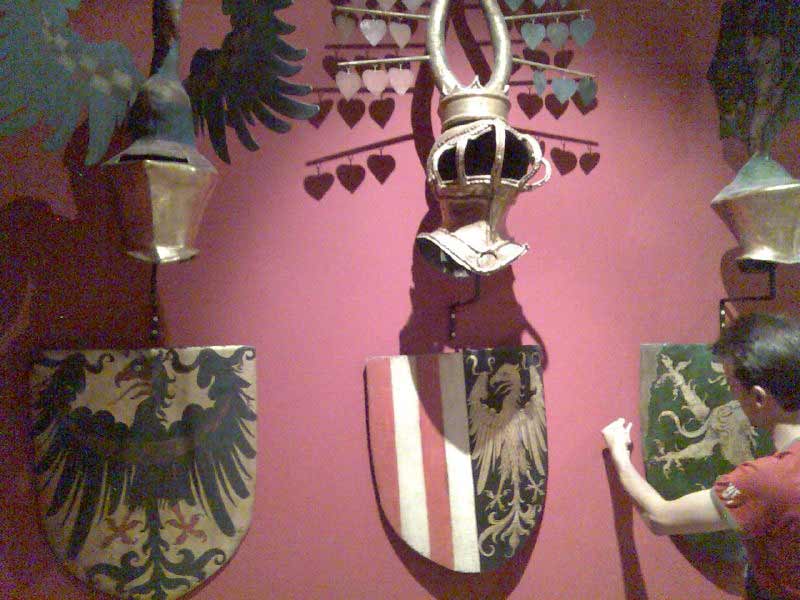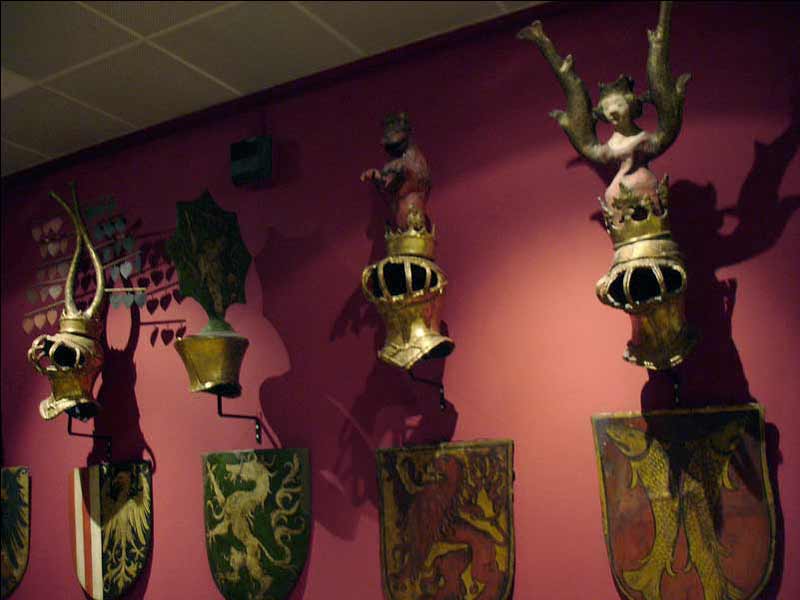| Author |
Message |
Nathan Robinson
myArmoury Admin


|
|
    |
 |
Adam D. Kent-Isaac

|
 Posted: Sat 30 Jan, 2010 10:23 am Post subject: Posted: Sat 30 Jan, 2010 10:23 am Post subject: |
 |
|
At the Higgins Armory:

You can always tell by the blackened, thin steel, and the obviously non-movable gorget lames.
Another view:

"English, second half of 17th century
Steel, iron, pain
Weight: 5 lbs. 15 oz.
By the early 14th century in Europse, armor was used to decorate the chuch tombs of important nobles or military heroes. In the late 16th century, this honor was extended to wealthy merchants who sought recognition of an honorable, chivalric life. This increased demand required reuse and redecoration of old armors, and the making of new ones. Helmets were central to the "achievement of arms," a set of equipment suspended above the monument or effigy of the deceased.
The practice declined by the end of the 16th century, and during the next century armor merely accompanied the deceased's body to the church. Enthusiastic armor collecting in the 19th century resulted in many funerary panoplies being sold off by poor parish clergy to dealers and collectors. "
Funerary helmet of Sir Richard Lee:

He died during the reign of Elizabeth. This funerary helmet is clearly not English in design, but rather has a German look to the upper bevor, the "duck-billed" look as I like to call it.
Many coats of arms are topped with the barred-visor tourney helm (a very old fashioned type of helmet) but far more of them seem to have frog-mouthed Stechhelms on top:

Pastime With Good Company
|
|
  |
 |
Jared Smith

|
 Posted: Sat 30 Jan, 2010 12:05 pm Post subject: Posted: Sat 30 Jan, 2010 12:05 pm Post subject: |
 |
|
I think this can be considered related since the topic is both funerary and heraldry"iconography" related. A significant amount of art depicting helms that was developed for heraldic purposes survives from the 16th century forward. Helms featured as parts of crests were prominent in German “bookmarks”, meaning stamped designs placed in books to show ownership. Nearly all helms shown in these cases, as well as some of the previous funerary examples, are “tournament” helms which had come to imply something we can debate about regarding wealth, class, and resources in order to be eligible for German tournaments by the 16th century AD.
The example posted is a bookmark from 1509 by Albrecht Durer for a senator of Nuremburg, Michael Schwarzhach.
Art from “German Book-plates”, Charles Sumner of Boston, Harbard College Library, class of 1830, page 106.
 Attachment: 188.11 KB Attachment: 188.11 KB

Absence of evidence is not necessarily evidence of absence!
|
|
  |
 |
|
Gregory J. Liebau
Location: Dinuba, CA Joined: 27 Nov 2004
Posts: 669
|
 Posted: Sat 30 Jan, 2010 2:10 pm Post subject: Posted: Sat 30 Jan, 2010 2:10 pm Post subject: |
 |
|
What's interesting is how these 16th and 17th century funerary helms with the barred visors derive firstly from tournament helmets for mounted blunted steel and baton combat in from the early 15th century, and as a consequence are literal interpretations of the motif helms common on heraldric devices such as the example just posted by Jared. Although by the time they were made, they would seem novel and less than useful, their origins lie in proper, practical tournament helms from generations past. It's an interesting topic... I'm glad you posted it Nathan. Cheers!
-Gregory
(EDIT: I just noticed, even more coincidentally, that the figurine in Jared's avatar is wearing just such a helm as those 15th century tournament pieces I mentioned!)
My Flickr Galleries - Travel, Nature & Things
|
|
  |
 |
M. Eversberg II

|
 Posted: Sat 30 Jan, 2010 2:19 pm Post subject: Posted: Sat 30 Jan, 2010 2:19 pm Post subject: |
 |
|

That has to be the ugliest helm I've ever seen! Perhaps this is evidence for a certain Dr. Zoidburg having paid a visit to our past? 
On a more serious note, I wonder what could have inspired that to adorn your final resting place for all time.
M.
This space for rent or lease.
|
|
      |
 |
Michael Harley

Location: Melbourne, Australia Joined: 12 Apr 2006
Posts: 94
|
 Posted: Sat 30 Jan, 2010 3:19 pm Post subject: Posted: Sat 30 Jan, 2010 3:19 pm Post subject: |
 |
|
No information on these unfortunatly, just a couple of images I grabbed from flickr, I think.
 Attachment: 54.44 KB Attachment: 54.44 KB

 Attachment: 34.04 KB Attachment: 34.04 KB

|
|
   |
 |
Adam D. Kent-Isaac

|
 Posted: Sat 30 Jan, 2010 7:27 pm Post subject: Posted: Sat 30 Jan, 2010 7:27 pm Post subject: |
 |
|
Know this: apparently some actual field helmets were used as mortuary decorations. This gilded helmet, which is labeled as possibly from Holland, was built for combat but hung over a tomb:

It most likely belonged to someone very wealthy.
This helmet from Bunratty Castle, Ireland, was clearly made as a decoration:

Pastime With Good Company
|
|
  |
 |
|
|
You cannot post new topics in this forum
You cannot reply to topics in this forum
You cannot edit your posts in this forum
You cannot delete your posts in this forum
You cannot vote in polls in this forum
You cannot attach files in this forum
You can download files in this forum
|
All contents © Copyright 2003-2025 myArmoury.com — All rights reserved
Discussion forums powered by phpBB © The phpBB Group
Switch to the Basic Low-bandwidth Version of the forum
|

